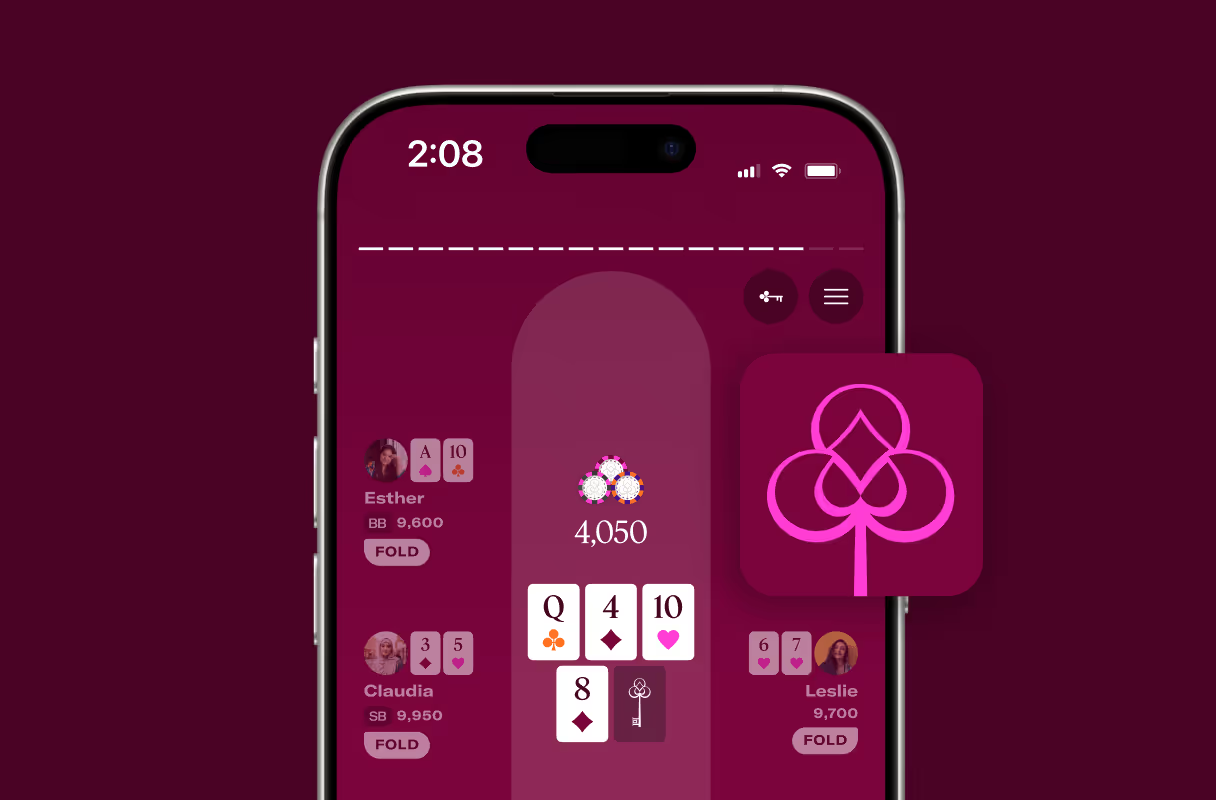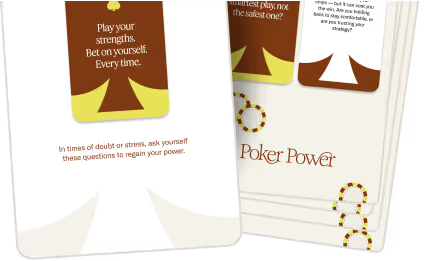Risk is as scary as it is necessary in our lives. For many young adults, the risk required for career progression is a source of anxiety and a stumbling block. The more you know about risk, the more confident you will be acting with limited information and accepting risk to achieve your goals. Here are seven techniques to boost your risk-management skills.
- Consider outcomes and probabilities of calculated risks
- Win or lose, you still win
- Risk segmentation
- Talk about the risk with others
- Separate yourself from the risk
- Use commitment devices
- Play poker
Consider outcomes and probabilities of calculated risk
The first step in embracing risk is understanding it. Some minor risks, like buying a lottery ticket, can be mathematically analyzed to determine their efficiency. What are the chances of winning and what is the potential payoff of a win? If the expected payout is below the cost to enter, it’s not a worthwhile venture.
Many risks, however, don’t have such black and white outcomes. Perhaps you’re considering a cross-country move to a region where you’ve always wanted to live. Such a big shift in your social circle, living arrangements, and work life can be jarring, but it can be more practical to look toward the end-state of how the move might go.
On the negative extreme of all possible outcomes, you could discover the new area is well below expectations, and you’d have to move back at moderate expense and inconvenience. The best-case scenario is that you thrive in the new community and surroundings, which would allow you to live happier for decades. Then there's the middle ground, where the novelty and mild quality of life improvements of your new location might compensate for the trouble of uprooting your life, and the move was almost or barely worth it.
Economists and game theorists call this form of problem-solving reverse induction. Poker and chess players think about the simplified scenarios they want to reach at the end of the game, and then make the early moves that set them on the path to those scenarios.
Win or lose, you still win
The best risks to take are those where coming close is still a win. A great example of this is negotiating your pay at work. If you make a compelling case for the value you add to the company, your boss might not give you all of what you ask, but she will likely increase your salary.
If the risk you’re taking has a binary outcome, you can assuage your risk aversion by seeing accomplishment in the failure. If you’re applying to a selective graduate program, it can be deflating to start on an application that will feel like a waste of time if you don’t get in. A strategy to keep yourself motivated is to envision the regret your future self might feel if you never put yourself out there. If you get rejected, you will probably grow from the experience, and you definitely will have gained peace of mind by putting your best foot forward and at least trying.
Top poker players employ this strategy in their approach to bluffing. By semi-bluffing, choosing bluffs that have a chance to improve to a strong hand, poker players have multiple paths to success. A semi-bluff can either cause an opponent to fold a hand that is currently in the lead, or potentially become the best hand later on to win a large pot.
Segment the risk
Many risks can be broken into multiple smaller risks or into a series of smaller steps. If you are switching careers, you can start by setting up coffee chats with peers who have made the transition from your current career to your future career. Then build your skills to grow a competitive resume, interview to land a new position before leaving your current job, accept an offer that retains one of the location, function, or industry of your current career, and finally make the full transition later when you feel ready.
Not only does the technique of risk segmentation help give you an achievable mental to-do list, it also lets you hedge against the downside of your risk by giving you outs if you discover early in the process that this risk is no longer worth it.
Poker players manage risk aversion by dividing their total capital into a collection of smaller entries into games. Each entry represents a controlled and uncorrelated risk to the total portfolio of entries they will make. While one instance might not work out in your favor, the law of averages suggests that a great number of smart risks will progress toward the expected, favorable result.
Talk it over with people you trust
To get into the right mindset to take risks, you can always consult with friends and family for a sanity check. If you used to love seeing concerts at your local coffee shop, but have been nervous to go back because of the risk of contracting COVID-19, ask your friends what they would do if they were you. There is reassurance in gathering the opinions of multiple trusted sources. It’s easy to doubt yourself, but hard to doubt the group.
From hedge fund managers to professional poker players, the best risk-takers stand on the shoulders of giants to gain confidence in their decisions. Support systems are crucial when you take risks, not only to ensure you’re going about it in a smart way, but also to talk through any doubt that can come up during or after you execute the risk.
Separate yourself personally from the risk
It’s human to attach your identity to your achievements, but when the results of a risk affects your self-worth, you’ll be less likely to take risks in the future. Try to remove yourself from the event and evaluate your risk play on whether or not it was a strategically wise move.
Poker teaches players to accept that some day, a win isn’t in the cards. If you play poker tournaments, you’ll only win a part of the prize pool around 15% of the time. Over the long run, your results become indicative of your ability level, but after losing a single game of poker you can recognize that luck is a factor and review what you had control over: your decisions.
Let’s say you’ve called in favors at work to get the opportunity to present your ideas on a product's direction to key stakeholders. Presentations can feel like extensions of yourself since you are the voice and creative director of the meeting, but the result of your pitch could hinge on a multitude of factors. You could have caught the stakeholders at a time where their thoughts were on solving more pressing issues. You could have the right idea, but it's the wrong time for the company’s development. Or you could be presenting in a style that clashes with those specific stakeholders’ preferences, even if it would have charmed most people in their positions.
There is so much out of your control, it’s pointless to beat yourself up over a risk that didn’t work out. Instead, go into the process with the mindset that you’re capitalizing on an opportunity to advance your career. So long as you prepare for the presentation to the best of your ability, everything that happens in the boardroom is beyond your control.
Use commitment devices to maximize your opportunity
Commitment devices are ways for you to give yourself additional incentive to pursue a risk you want to take. For instance, if you want to ask your partner to move in with you, you could give a friend your favorite accessory, like air pods, jewelry, or a watch you always wear, and tell her not to let you have it back until you’ve had the conversation with your partner.
Many poker players correct erroneous tendencies by recording the hands they play in a tracking database and showing the footage to a respected peer. Common issues that a player might want to improve are impatience, passivity, and a lack of focus. Often, the mere knowledge that the player will need to explain their thought process for each of their plays is a strong enough commitment device to correct the player’s mistakes.
Commitment devices help you counterbalance irrationalities by sweetening the pot when you take risks. The helpful thing about smart risks is that once you’ve taken enough of them, you’ll see the benefits gained over time and will become mentally rewired not to need commitment devices anymore.
Practice taking risks by playing poker
The best sandbox in which to experiment with risk-aversion strategies is the poker table. Each decision in a game of poker involves evaluating the risk of betting chips for the reward of winning more chips. You’ll have to ferret out when an opponent is bluffing and when they have a strong hand, then decide whether you should bluff them back when the opportunity presents itself. Poker touches every aspect of risk evaluation, from capital allocation to action under uncertainty.
If you want to learn more about poker and play poker with a group of smart women where no real money transacts, enroll in Poker Power’s Community Lessons. We teach how to take calculated risks and bet big on yourself. Are you ready to take a seat at the table and unleash the power of poker?





